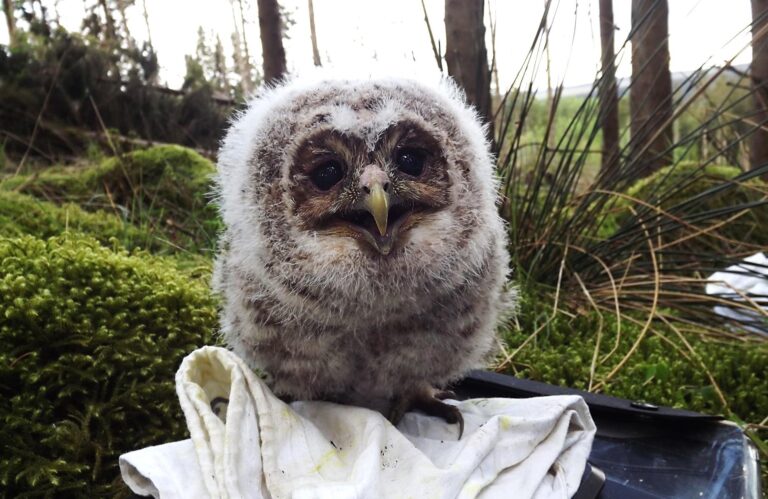Project Description
Predicting the response of populations to environmental changes requires understanding of how reproduction, survival, and recruitment into the breeding portion of the population covary with food supply and predation. These influences may reflect the intrinsic productivity of a location, or changing conditions, such as variation in the distribution of predators or prey diversity and abundance.
In many territorial species, individuals rarely relocate after settling in their breeding location. Accordingly, subpopulations are linked by the (natal) dispersal movements of the offspring of settled individuals. Dispersers may acquire their territory as yearling or as delayed recruits having spent several years searching far and wide for a vacant territory. Dispersal fluxes of mobile nonbreeding individuals between subpopulations may asymmetrical, with some subpopulations transiently or permanently being subsidised by immigrants born in other subpopulations.
How tightly the dynamics and persistence of subpopulations are bound to each other by dispersal largely depends on the number of mobile non-breeders. The pool of non-breeder is fuelled by reproduction by territorial individuals and depleted by their mortality and associated vacant territories. While non-breeding individuals are crucial to the resilience of populations of long-lived species, as vividly illustrated by the recent epidemic of highly pathogenic avian influenza that affected breeding, but not non-breeding, seabirds, it is notoriously difficult to census the non-breeding population. Therefore, the spatial scale and extent over which the delayed recruitment of non-breeders can buffer environmental variation is not well understood.
This project will build on an exceptional dataset spanning 40 years of continuous monitoring through ringing of linked subpopulations of Tawny owl breeding in nest boxes in Kielder Forest and the adjoining lower altitude forests spanning 600 km2, to quantify how demographic parameters, including dispersal fluxes, vary with changing food supply and predation. These owl populations experience short term (3-4 years) variation in prey availability reflecting cycles in the abundance of field voles, as well as longer-term variation in cycle amplitude (20–700 voles ha−1), which heavily influence the production of owlets and juvenile survival. Similarly, predation by goshawks and pine martens increasingly impacts owl dynamics as these species recover from the impact of past persecution. Goshawks recolonised the area in the 1980ies and prey on juvenile and adult owls, and recolonising pine martens, which mostly predate on eggs and owlets.
The student will become proficient with trapping, handling, and ringing owls under the mentorship of committed raptor workers. They will receive training for mastering state-of-the-art Bayesian statistics for demographic analysis for wildlife population dynamics, including multi-state, multi-event, capture-recapture analysis and Integrated population models, a powerful formal framework for combining multiple data sources. Empirical estimates of fluxes of dispersers between adjoining forest and beyond the study area will be used to develop an individual-based simulation model to explore how disperser mobility and ability to detect vacant territories affects the resilience of populations to environmental change, such as epidemics, increased predation or changes in prey availability. They will work closely with our CASE partner Forestry England who manage the land for timber production, recreation and biodiversity.
CANDIDATE BACKGROUND
This PhD is suitable for a student enthused by population ecology and the application of state-of-the art statistical techniques to hard-won field data to inform conceptual as well as practical management and conservation issues.
An excellent ability to interact with practitioners is essential as the project is a collaboration including land managers and enthusiastic raptor workers as well as academics.
Our student will be eager to gain valuable field experience, willing to travel away from Aberdeen for 3 or more months per year and to make a substantial time investment collecting field data, including by capturing and handling owls under licence. They will be able to demonstrate an aptitude with statistical analysis of data and be committed to become trained in the use of state-of-the-art quantitative ecology and agent-based modelling.
The student must have a full driving licence. Some prior experience with field work and work with animals (possibly holding a bird ringing licence) would be an asset.
Photo credit: Sarah Hoy
Supervisors
Xavier LambinPrimary Supervisor: | Profile: Xavier Lambin Email: x.lambin@abdn.ac.uk Institution: University of Aberdeen Department/School: School of Biological Sciences |
Paul CaplatSecondary Supervisor: | Profile: Paul Caplat Email: p.caplat@qub.ac.uk Institution: Queen's University, Belfast Department/School: School of Biological Sciences |
Additional Supervisor: | Dr Deon Roos, University of Aberdeen, School of Medical Sciences, Lecturer in Applied Statistics Dr Chris Sutherland, University of St Andrews, Centre for ecological and environmental modelling Email: css6@st-andrews.ac.uk |
References
Millon, A., Petty, S. J. & Lambin, X. (2010) Pulsed resources affect the timing of first breeding and lifetime reproductive success of tawny owls. Journal of Animal Ecology, 79, 426-435
Hoy SR, SJ Petty, A Millon, DP Whitfield, M Marquiss, M Davison & Lambin X. (2015) Age and sex‐selective predation moderate the overall impact of predators. Journal of Animal Ecology 84, 692–701
Millon A, SJ Petty, B Little, O Gimenez, T Cornulier & X Lambin (2014) Dampening prey cycle overrides the impact of climate change on predator population dynamics: a long‐term demographic study on tawny owls. Global Change Biology 20(6),1770-1781
QUADRAT Themes
- biodiversity
- environmental-management
Partners
CASE Partnership with Forestry England
A CASE Partnership project is delivered in collaboration with an industry partner. The CASE partner organisation contributes finance, expertise, facilities and an internship.






















































